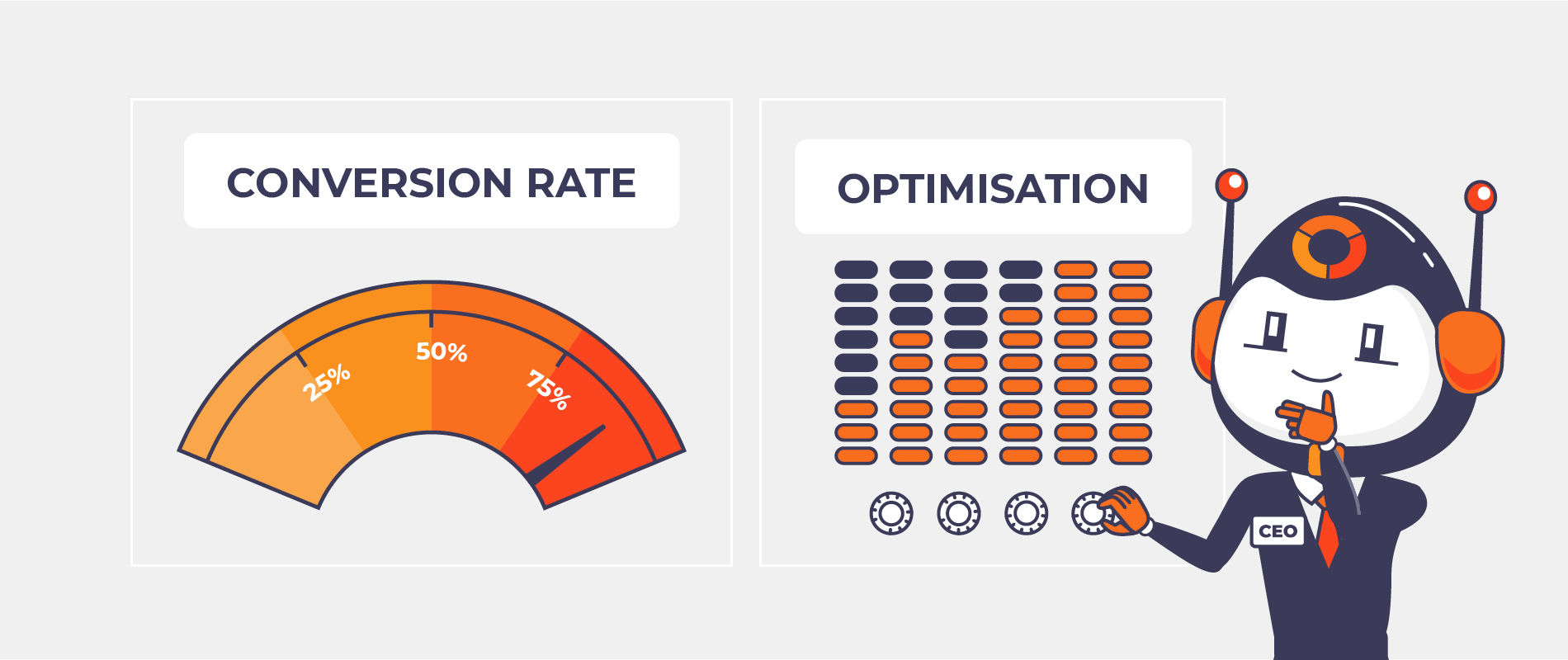It’s sensible for a SaaS marketer to ask, ‘What is a good conversion rate?’ However, this is an incomplete question that could result in many ambiguous answers.
The complete question is, ‘What is a good conversion rate for X?’ – and X may be a whole variety of things, each giving wildly different answers.
For example, X in the digital world could be:
- a landing page opt-in;
- an eCommerce sale;
- a subscriber to your email list.
Or, in the physical world, could be:
- leads generated at an expo or conference;
- the conversion rate of sales meetings;
- a lead-to-sales qualified lead conversion rate.
It’s also important to point out that what one business considers to be a good conversion rate may be poor for another. This really depends on the nature and goals of the business.
For example, a good conversion rate for a SaaS company selling a £50 monthly subscription for a software service will be considerably more substantial than a good conversion rate for a high-end home improvement company. An architect, hypothetically, may have an average sale value running into the thousands of pounds and can only handle twenty projects per year.
What is a good SaaS conversion rate?
A good SaaS conversion rate is considered typically to fall with 3-5%, while a strong conversion rate would be anything from 8%.
Whilst these benchmarks are a good guide, your focus shouldn’t be on what everyone else is doing but rather what your conversion rates are doing and what is needed to achieve your business goals.
Define what a good SaaS conversion rate looks like to you
Depending on your own individual business and how it operates, you’ll have different conversion rates that matter to you and that should be monitored. To start with, map out every step of your sales funnel and then measure the conversion rates between each one.
Once you’ve done this, you can then set the targets and make your decision on what is a good conversion rate for your business, and this is what you should be aiming for. Providing, of course, that your targets are realistic and achievable.
Let’s take the example of a software company that has an average sale price of £50,000 per annum. Their target is to generate an additional £1m worth of new business this year. So, what would be a good conversion rate for them?
The first thing to do is to map out their sales and marketing funnel or process. Let’s say that they have the following process:
- They receive a lead online.
- They have a connect call where they qualify the lead as being a sales qualified lead (SQL).
- A salesperson has a call/meeting and conducts a discovery call and creates an opportunity if there is a match.
- A proposal is sent.
- A decision is made by the prospect and becomes a customer or not.
Now that we understand this process, we can start to measure our conversion rates and apply these figures to the overall business goal which will then help us to identify the areas of focus.
If we need £1m of new revenue and we have an average sales price of £50,000, then we need 20 new customers.
If we know that once a proposal is sent, the conversion rate is 20%, then 100 proposals need to be sent.
If we know that a salesperson will create a proposal for 50% of the prospects they meet with, then we know that they need to have 200 meetings.
If we know that 1 in 5 sales qualified leads will go on to have a meeting, then we need 1,000 sales qualified leads.
If we know that 1 in 5 internet leads become sales qualified, then we know we need 5,000 internet leads.
We can then look at the visitor-to-lead conversion rate from the website. If this is 2%, then we know that to hit our target of £1m new revenue, we need 250,000 visitors to the website.
This method reverse engineers the requirements. When we look at the individual conversion rates, we can then ask the question: what is a good lead-to-visitor conversion rate? In this example, 2% may seem low, but it’s actually about average if it is an overall visitor-to-lead measurement, i.e. all visitors on the website.
However, it is low if it is visitors to a landing page where the conversion rate could considerably higher. A landing page conversion rate could be considered good if it exceeds 10%, but we’ve seen as high as 60%.
Looking at conversion rates in this way enables you to calculate the input that is needed to achieve the goal. In this example, 250,000 website visitors.
Depending upon what industry you’re in, that input may or may not be possible. You could calculate it the other way around where you look at the current input and work out desired conversion rates. Let’s say we had 125,000 visitors already, then the option is to focus on increasing the conversion rates to achieve the same output.
For example:
If you had 125,000 visitors and you focused on increasing your lead-to-visitor conversion rate to 4%, you would have the same amount of leads that are required to achieve the same goal.
In summary, the answer to ‘What is a good conversion rate?’ is dependant upon the type of conversion that you are measuring and the conversion rate that you need in order to achieve those business goals.
Stay Updated with Our Latest Insights
Get expert HubSpot tips and integration strategies delivered to your inbox.



